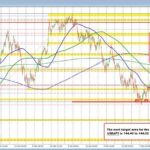
USDJPY Forecast: Navigating Market Volatility in April 2025
Tháng 4 3, 2025
Navigating the AUD/USD: Insights, Trends, and Future Projections
Tháng 4 3, 2025March Non-Farm Payrolls Preview: Insights and Implications
As we approach the release of the March non-farm payroll figures, analysts and investors eagerly anticipate the key data that will reveal the current state of the U.S. labor market. The projections indicate a potential shift in employment trends, as various economic factors come into play. In this detailed overview, we will explore the expected numbers and the broader economic context that shapes these forecasts.
Expected Payroll Growth and Labor Indicators
For March, non-farm payroll growth is projected to range between 125,000 and 140,000 jobs, a downturn from the previously reported 151,000 in February. Some estimates suggest that the actual increase could be as low as 120,000, highlighting a potential slowing momentum in hiring across several sectors. The anticipated unemployment rate is expected to remain stable at 4.1%, with a slight possibility of it rising to 4.2%. This stability suggests that while job creation may be slowing, the overall employment landscape is not deteriorating rapidly.
Another critical element of this report is the performance of private payrolls, which are expected to show an increase of 155,000 jobs. This figure surpasses initial expectations that projected a more modest 115,000 job growth, offering a silver lining amidst the overall cautious outlook. However, there are forecasts of federal job cuts, predicting a decline of about 15,000 federal positions, which could detrimentally affect the overall job growth narrative.
Economic Context: Challenges to Job Growth
The undercurrents affecting the labor market include economic uncertainty and shifts in trade policies, particularly impacts stemming from tariffs. These elements contribute to a more cautious hiring environment, as employers remain wary of the future. Despite the brighter signals from the ADP report, which often hints at a robust employment environment, the U.S. labor market grapples with significant challenges. Notably, reduced immigration and continued federal job losses cast shadows on overall growth prospects. For more insights on investment strategies considering such challenges, see this article on investment mistakes to avoid in 2023.
Moreover, upcoming payroll numbers may see heightened market volatility. Financial analysts predict that irrespective of whether the results align with the lower expectations or deliver a surprise, the consequences for financial markets could be noteworthy. Variations in employment data tend to influence investor sentiment and lead to movements in key currencies, particularly the U.S. dollar, as well as commodities like gold. It’s essential for investors to navigate through these market dynamics, similar to the strategic investment moves suggested by Barry Ritholtz.
Conclusion: Monitoring Future Trends
As we await the official data release, it is crucial to remain attuned to the broader economic signals and their implications for employment trends. The March non-farm payroll numbers will not just reflect the immediate state of hiring but also set the tone for future economic policies and market behaviors. Investors, economists, and policymakers alike will be looking to interpret these figures closely, as they hold vital clues about the direction of the U.S. economy in an increasingly complex landscape. In navigating through this uncertainty, the labor market’s health remains a pivotal point of focus for continued economic discourse. For a deeper understanding of how the current economic environment may affect investment strategies, check out this analysis on value investing and market dynamics.

